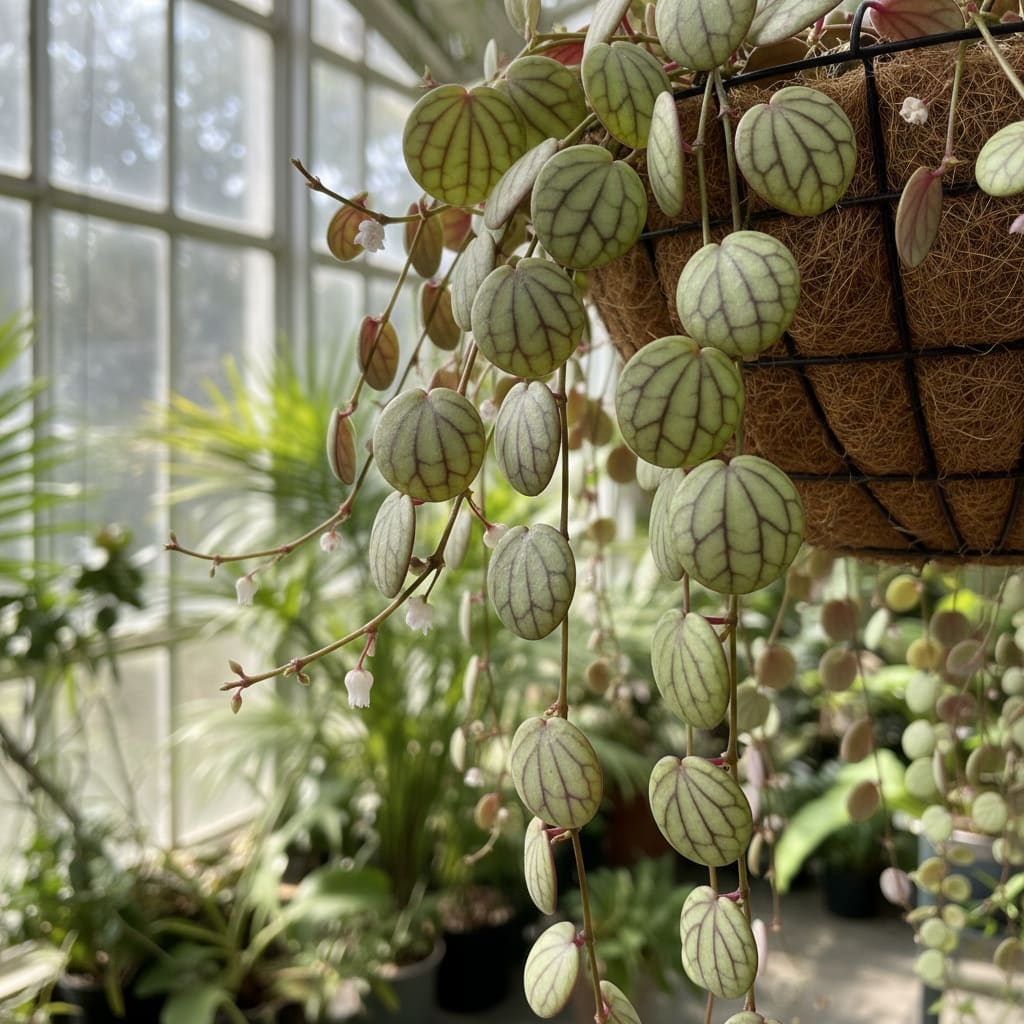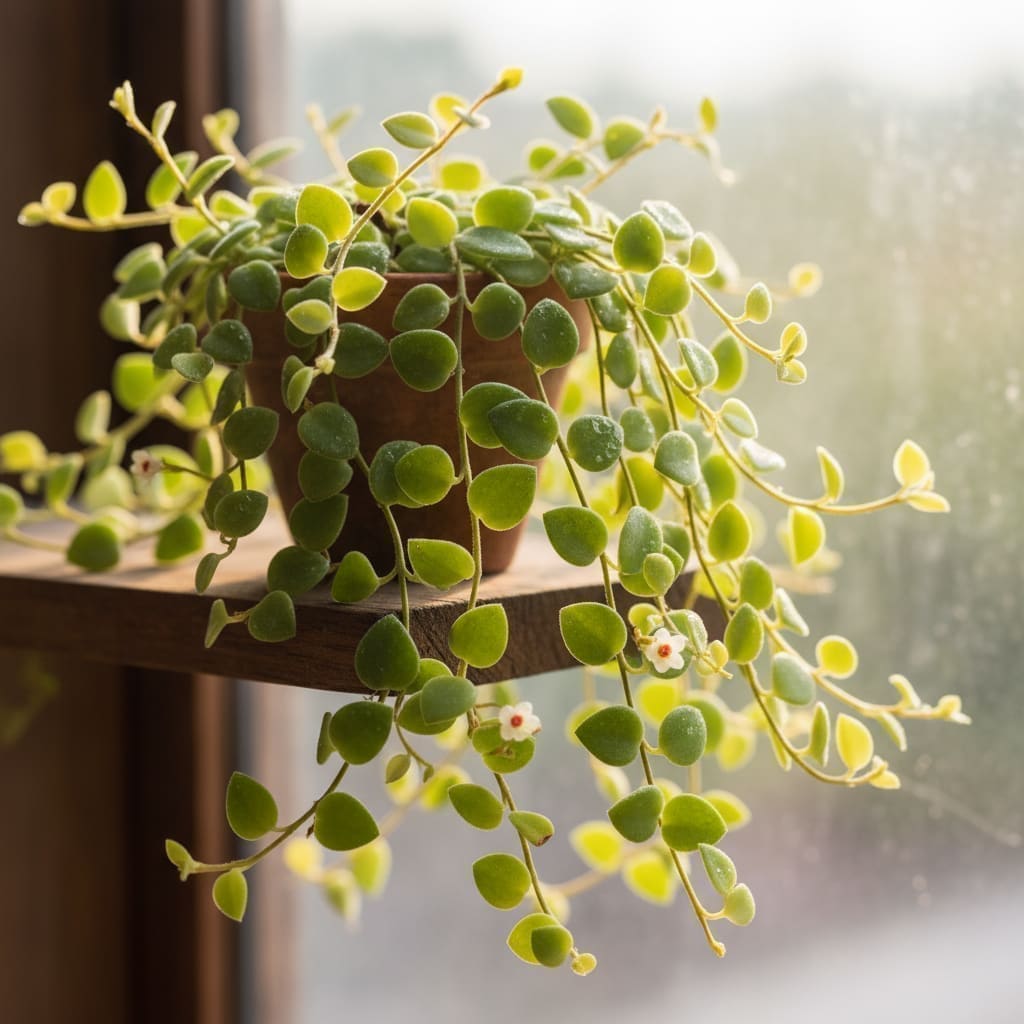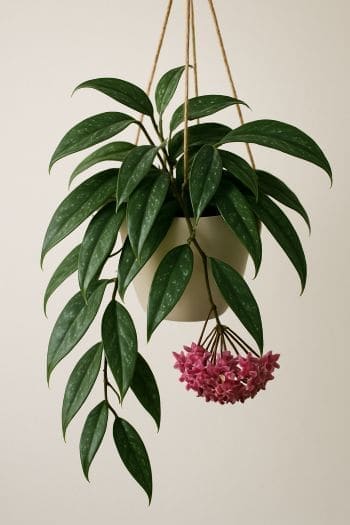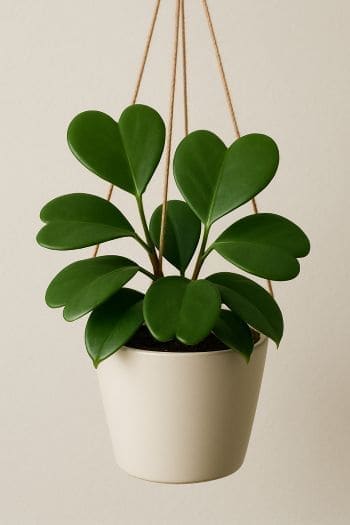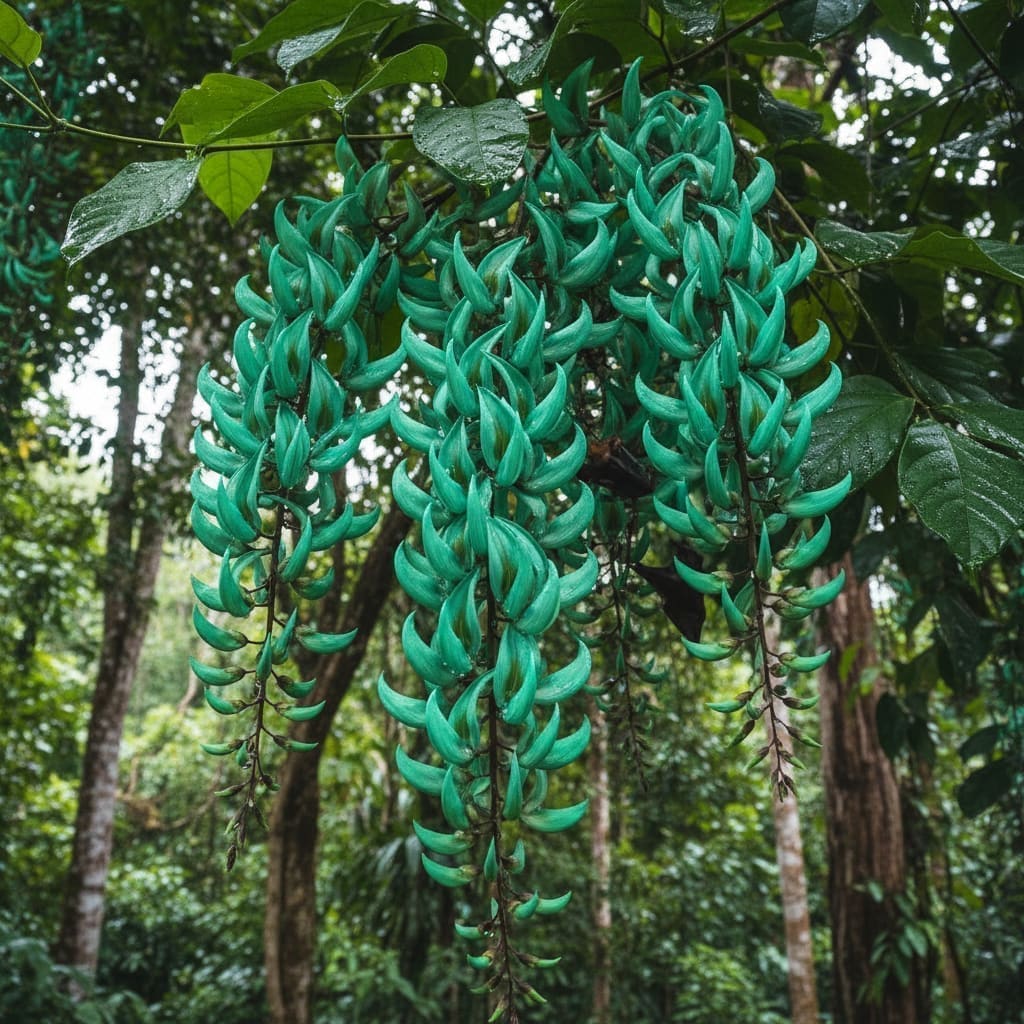Dischidia pectinoides Care & Growing Guide
Overview
Dischidia pectinoides, commonly known as the Ant Plant, is a fascinating epiphytic species native to the Philippines. It is notable for its unique hollow, pouch-like leaves that often house ants in the wild, forming a mutualistic relationship. In cultivation, it is prized for its trailing or climbing habit, charming foliage, and adaptability to indoor environments when provided with bright, indirect light and high humidity.
Identification & Growth Habit
This plant is a trailing or climbing epiphyte, meaning it naturally grows on trees rather than in soil. Its stems are slender and flexible, producing small, green, pouch-shaped leaves interspersed with flat foliage. The pouches can collect organic debris and moisture, mimicking the plant’s natural nutrient-gathering method in the wild. In the right conditions, it can produce small, inconspicuous flowers, though these are not the main ornamental feature.
Light & Placement
Provide bright, indirect light to encourage healthy growth and maintain vibrant foliage. A position near an east- or north-facing window is ideal, or a few feet back from a bright south- or west-facing window with sheer curtains to diffuse direct rays. Avoid prolonged direct sunlight, which can scorch the leaves, and avoid very low-light conditions that can cause leggy growth.
Watering & Humidity
Water moderately, allowing the top inch (2–3 cm) of the potting medium to dry before watering again. Overwatering can lead to root rot, especially if the plant is kept in a dense mix without adequate drainage.
Humidity: Dischidia pectinoides thrives in humidity levels above 50%. In dry indoor climates, increase humidity by:
- Using a room humidifier
- Placing the plant on a pebble tray with water (without submerging the pot)
- Grouping plants together to create a microclimate
- Light misting in the morning (avoid soaking the leaves)
Soil & Repotting
Use a well-draining epiphytic mix similar to those used for orchids. A blend of fine orchid bark, perlite, and peat moss or coco coir will provide adequate aeration and moisture retention. Repot every 2–3 years or when the plant outgrows its container, preferably in spring. Choose a pot with drainage holes to prevent waterlogging.
Fertilizing
Feed monthly during the active growing season (spring and summer) with a balanced liquid fertilizer diluted to half strength. Reduce feeding to once every 6–8 weeks in fall and winter when growth slows. Over-fertilizing can cause salt buildup and damage roots, so flush the soil occasionally with plain water.
Pruning & Training
Prune to control length, remove damaged leaves, and encourage bushier growth. Trim just above a node to stimulate branching. Dischidia pectinoides can be trained to climb a trellis, moss pole, or other support, or allowed to trail from a hanging basket. In its natural habitat, it clings to bark and branches, so providing a textured support can encourage natural growth patterns.
Propagation
Propagation is typically done via stem cuttings. Follow these steps:
- Select a healthy stem with at least two nodes and several leaves.
- Use sterilized scissors or pruners to make a clean cut just below a node.
- Remove the lower leaves to expose the nodes for rooting.
- Place the cutting in water, moist sphagnum moss, or a light potting mix with high humidity.
- Keep in bright, indirect light and maintain consistent moisture (but not sogginess).
- Roots typically develop within a few weeks; transplant to a suitable pot once established.
Common Problems
Pests
- Mealybugs: Appear as white, cottony masses. Remove manually with a cotton swab dipped in alcohol or treat with insecticidal soap.
- Scale insects: Brown, shell-like bumps on stems and leaves. Scrape gently or use horticultural oil.
- Spider mites: Fine webbing and stippled leaves. Increase humidity and use miticide if infestation persists.
Diseases
- Root rot: Caused by overwatering or poor drainage. Remove affected roots and repot in fresh, well-draining mix.
- Leaf yellowing: Often due to excess water, low light, or nutrient imbalance.
Toxicity & Pet Safety
Dischidia pectinoides is considered toxic if ingested by pets or humans. Keep out of reach of cats, dogs, and children. Contact a veterinarian promptly if ingestion is suspected.
Styling & Decor Tips
- Display in a hanging basket to showcase its trailing habit.
- Train along a decorative trellis for a vertical accent.
- Combine with other epiphytes like Hoya for a tropical display.
- Place in a bright bathroom to take advantage of natural humidity.
Varieties & Cultivars
While Dischidia pectinoides itself is the most commonly cultivated form, other Dischidia species (such as Dischidia ovata or Dischidia ruscifolia) offer varied leaf shapes and patterns. Within D. pectinoides, leaf size and pouch prominence can vary slightly depending on growing conditions and origin.
Buying Tips & Maturity
When purchasing, look for plants with firm, green leaves free from spots or blemishes. Avoid specimens with wilted or yellowing foliage. Younger plants may have shorter vines and fewer pouches; with time and proper care, they will develop longer trails and more pronounced pouch leaves. Mature plants can produce small flowers, though these are subtle and seasonal.
Seasonal Care
- Spring/Summer: Active growth period. Water and fertilize regularly, provide ample light and humidity.
- Fall/Winter: Growth slows. Reduce watering and feeding, but maintain light and protect from cold drafts.
FAQ
- How fast does Dischidia pectinoides grow? Growth is moderate under ideal conditions, with noticeable vine extension during spring and summer.
- Can it grow outdoors? In warm, frost-free climates, it can be grown outdoors in shaded or filtered light areas. In cooler regions, keep it indoors.
- Does it need a moss pole? Not strictly, but providing a support can encourage climbing and fuller growth.
- Why are my plant’s leaves shriveling? Likely due to underwatering or low humidity. Check soil moisture and increase ambient humidity.
- Will it flower indoors? It can, but flowers are small and not the main ornamental feature. Good light and consistent care increase the chances.
Troubleshooting Scenarios
- Leggy, sparse growth: Usually caused by insufficient light. Move the plant closer to a bright window or supplement with a grow light.
- Pouch leaves collapsing: Can indicate prolonged drought stress. Increase watering frequency slightly and ensure humidity is adequate.
- Brown leaf tips: Often a sign of low humidity or excess fertilizer salts. Flush the medium with water and use distilled or rainwater if tap water is high in minerals.
Advanced Pruning & Training
For a fuller display, pinch back new growth tips regularly during the active season to stimulate lateral shoots. Consider layering stems over a moss-covered hoop or frame to create living sculptures. For wall-mounted displays, secure stems gently with soft ties to encourage even coverage and prevent tangling.
Companion Plant Suggestions
- Hoya carnosa – shares similar light and watering needs, offering contrasting leaf shapes.
- Philodendron micans – adds velvety foliage texture alongside the glossy Dischidia leaves.
- Tillandsia species – air plants that thrive in similar humidity and can be mounted together for a cohesive epiphytic arrangement.
Do & Don't List
- Do: Rotate the plant occasionally for even light exposure.
- Do: Use sterilized tools when pruning to prevent disease spread.
- Don't: Let the plant sit in standing water.
- Don't: Place directly under strong midday sun without protection.
